Estonia’s Only Travel Guide You Need For A Great Trip in 11 Easy Steps
- Destinations Europe
Cruisit Team
- August 27, 2022
- 0
- 4900
- 84 minutes read
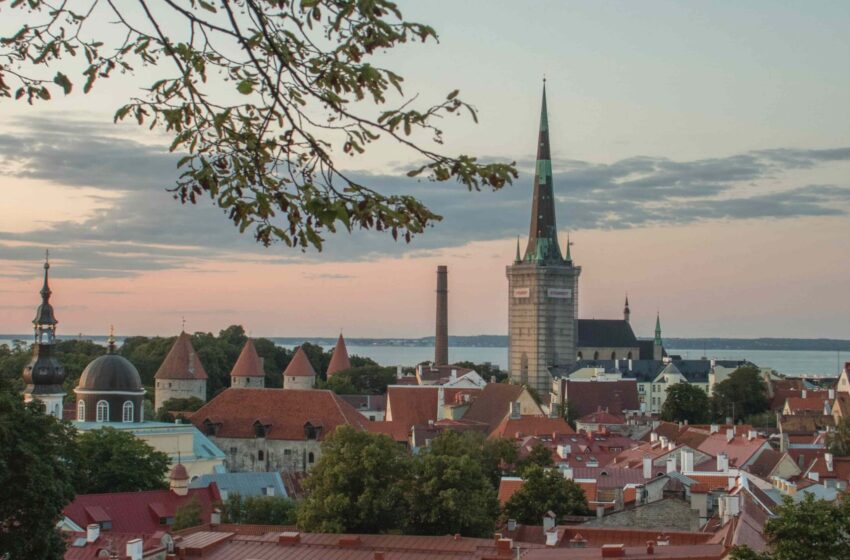
Estonia’s Background
Early Estonian ancestors arrived at the Baltic shore around 9000 BC, not long after the end of the last ice age in Europe. It was the Roman historian Tacitus, writing in Germania in the first century AD, who first described the Estonians. Political power was held by elders of each clan under a patriarchal structure. Traditional Estonian villages and rural society had developed by the year 800. There are still many people living in settlements that were founded during this time. It was the Vikings, beginning in the middle of the ninth century, who first landed on the country’s shores. They came by Estonia and Latvia on their route to the Slavic interior. The Danes and the Swedes made futile attempts to convert the Estonians to Christianity in the 11th and 12th centuries. The Russians conducted 13 invasions of Estonia between 1030 and 1192, but they were unable to establish dominance.
Over the course of the subsequent centuries, German monks made repeated unsuccessful attempts to convert the pagan Baltic people to Christianity, eventually resorting to a crusade that lasted for 9 years and resulted in the Germans capturing the southern part of Estonia. Danish invaders established Fort Taani Linn in northern Estonia two years later. The Danes had successfully swept through all of Estonia by 1227. Ultimately, the Germans eventually split Estonia with the Danes. They ruled Estonia for centuries before Russia and Sweden showed interest. The Russians attacked Estonia in 1558, and the Swedes took Tallinn the shortly after to keep them out. The Swedes eventually drove the Russians out of Estonia in 1582 after a protracted and bloody conflict between the two nations. However, when the war ended, Estonia began to flourish again. Estonia saw some progress while under Swedish control. In 1632, a school known as Tartu University was established. About 50 years later, in 1710, Estonia was hit by famine and a plague, killing tens of thousands of people. The Great Northern War, fought between Sweden and Russia at the turn of the 18th century, was a second conflict between the two countries devastating Estonia yet again. Upon the conclusion of hostilities in 1721, the Swedes surrendered Estonia and the rest of the Baltic states to the Russians.
Tsar Alexander I of the Russian Empire ended serfdom and expanded peasant rights in the late 19th century. Awarenes grew, and so did the influence of nationalism in Estonia and the rest of Europe. After Alexander III became Czar in the late 19th century, Russia made studying Russian in schools throughout Estonia in an effort to “Russify” the country. Books and periodicals were produced in the Estonian language, and there was a renewed interest in Estonian history and culture. So, there was upheaval in Estonia and a liberal revolution in Russia. Estates belonging to Germans were set ablaze. There were a lot of protests as well. Nonetheless, the Russian troops brought back order, and more than 300 Estonians were killed and others were exiled. Another revolution took place in March of 1917. The Tsar stepped down this time. They demanded their freedom in Estonia.
Russians were inclined to allow some autonomy, but communists took over Moscow in 1917, and subsequently Germans ruled Estonia until 1918, when they surrendered to the western allies. In 1919, the Russians made another unsuccessful invasion attempt into Estonia. The Russians and the British navy that had been dispatched to Estonia clashed many times before the Russians agreed to a ceasefire in 1920, which led to Estonia’s recognition as a sovereign nation. A decade later, Estonia was devastated by the Great Depression of the 1930s, but under the rule of dictator Pats, the country’s economy began to revive, and Pats himself, shockingly, handed up part of his control. Within the next two years, the Russians returned, this time as part of the Soviet Union. When Hitler’s Germany attacked Russia, they also occupied Estonia. When the Russians invaded again, Hitler withdrew his troops, leaving Estonia under tyrannical rule. It wasn’t until the Soviet Union started its collapse in 1991 that Estonia was able to declare its independence. Communism was dismantled and a free market economy was established in Estonia.
Tiny Estonia, once conquered by the Germans, Danes, Swedes, and pulled out of the shadow of the Soviet Union, has undergone a remarkable transformation into a quaint, attractive, and affluent modern country by jumping into the arms of Europe. Estonia has a fast economic expansion, and it’s a progressive EU and NATO member, which shows a great illustration of how a country can recover economically, culturally, and politically from a traumatic past.
“Tiny, sparsely populated, full of ancient ruins and structures in a medieval setting, and surrounded by endless swaths of beautiful terrains to discover. A Baltic nation evolved into a haven for nature enthusiasts and history buffs remain cozy in the company of artifacts, or hike the mountains and forests.“
As a country, Estonia has no trouble standing out from the crowd since it is absolutely unique. It is culturally distinct from its Baltic neighbors, Latvia and Lithuania, with which it has a similar history and comparable topography. Despite sharing a language and culture, Estonia and Finland were divided by 50 years of Soviet control. Russia has had a 300-year relationship with Estonia, yet the two countries are about as similar as a bird is to a bear.
The coldest of the Baltics situated in the north, Estonians are making enormous efforts in reclaiming their heritage and enjoying their newfound prosperity. There is a sizable Russian population in all of the Baltic nations, which may be a source of conflict at times. Estonians have no common language with their Baltic neighbors, unlike Latvians and Lithuanians, and they only have a limited linguistic bond with Finns.
Estonia, even though is a tiny country, it is barely populated, and it’s the low population density, and vast woodlands that offer spiritual sustenance for nature enthusiasts, in the midst of Europe’s busy urban centers. Being largely uninhabited, Estonia is the perfect destination in Europe to explore its vast forests, lakes, coastline, and many islands. There’s also the obvious addition of Tallinn. One of Europe’s most popular travel spots is and one of the most preserved cities of the past.
Tallinn’s Old Town, a UNESCO World Heritage List, has captivated the hearts of the world and evolved into one of Europe’s most alluring metropolises, quickly becoming a must-see destination. The capital city of Tallinn is where most tourists go, spend a chilly evening sipping on hot chocolate and truffles in a cozy basement in ancient Tallinn, but despite the allure of Tallinn, it is the remainder of Estonia that will ultimately win you over. The island of Saaremaa is where you really want to spend some time since going there is like traveling back in time. Old churches and windmills dot the island, and the little settlements look like they’ve hardly changed in the previous decade. To go around the island, you’ll need to rent a car because public transit is severely insufficient. Tartu is the place to be to party with the wild students, but Narva will satisfy your Soviet era longings. Walk the Pärnu Promenade or check out a festival in cool Haapsalu.
A lot of tourists visit Estonia for the nightlife, but the nation has a lot more to offer than just cheap drinks and rowdy parties. While the urban centers buzz with energy, the countryside stubbornly clings to its heritage. Even if things are beginning to change, Estonia is still a great place to visit on a budget in Europe. Good deals can typically be found during the spring and fall shoulder seasons. The hotels and restaurants are open and willing to serve you despite the cold weather. There aren’t a lot of establishments open during the cold, dark winter months. There are also many affordable food options, as well as upscale eateries to choose from and savor the national cuisine of Estonia.
To enjoy Estonia the most, you will want to stay on the move in order to see and do as much as you can of what the nation has to offer for tourists. In this Cruisit Estonia’s travel guide, we give you a plan that falls halfway in the middle, with a good mix of leisure and discovery. Enter the country and fully experience and explore this hidden Northern European dream destination. Estonia’s trip plan we provide below is best experienced in the country’s high season, but you can also enjoy the shoulder season. Your European fantasies will come true, with warm days in well-preserved cities in the company of legend, or surrounded by lush peaks and dramatic picture-perfect countryside, not to mention tens of wildlife species to discover.
Also, in our travel guide to Estonia, we will provide you with all the information you will need to navigate the country at ease. Estonia’s highlights, tips, transportation, top places and attractions, a handcrafted itinerary in the cities of Estonia, and more will be provided for you as you read through. If you are excited enough by now, let us dig right in!
- Tallinn’s fortified old town is a medieval fairy tale with cafés, small lanes, cathedrals, cellared feasting halls, and much more, and it is quite popular with tourists.
- Lahemaa National Park is Estonia’s largest and best place to find peace and quiet; it features rivers, lakes, bogs, historic manor homes, and the sea.
- Saaremaa Island is a must-see if you’re in the area because of its windmills, local traditions, pristine woods, and stunning beaches. Famous for its vodka and robust brews.
- Pärnu is a great place to relax on the beach, and you can even go swimming in the Baltic.
- Walk the empty streets of Narva, Estonia, and think about Soviet architecture as you peer into Russia.
- Travel to lovely Viljandi and see the ruins of its Teutonic Castle.
- Kihnu Island is a fascinating place, and its women-dominated society is on full display here.
- Enjoy the sea wind or the Blues Festival in classy Haapsalu.
- Tartu is like a little version of Tallinn, and it is home to Estonia’s oldest university, so you can hang out with the students and enjoy the city’s Bohemian atmosphere.
- Visit the “Estonian Alps” near Otepää and go cross-country skiing.
- Take a trip to the beautiful Vihula Manor in Lahemaa National Park.
- Wasa Resort in Pärnu is a great option.
- Bike to the Panga Cliffs and Saaremaa Island’s trestle windmills, then go for a hike through the park’s wetland habitats at Soomaa National Park.
- Most countries developed countries won’t need a visa to visit or a simple Schengen visa.
- Estonian is just as challenging to learn as Finnish. In the cities, you’ll find that most Estonians can communicate in English. Less so in rural areas, however a phrasebook and knowledge of Russian or German could assist.
- Public transportation is an excellent value.
- Cycling is a fun and inexpensive way to get about and see the sights.
- You may get more for your money in Estonia since it is inexpensive.
- One of the least populous European countries is tiny Estonia.
- If you rent a car, you may easily make pit stops along the road to see the attractions.
- Tallinn, the capital city of Estonia, is easily navigated on two wheels thanks to the city’s many bike and electric scooter rental locations.
- The country of Estonia may be small, but it offers a wealth of experiences once you leave the confines of the city.
- Discover local Estonians through platforms like Meetup and Couchsurfing.
- Although no particular immunizations are needed, you should still double-check with the relevant authorities in both your home country and Estonia.
- The water from the tap is safe to drink, as it is across much of Europe. You can opt in for water bottles if you are wary.
- Unless you’re buying a lot of things, haggling is generally frowned upon in Estonia.
Crime & Scams in Estonia
The crime rate in Estonia is one of the lowest in Europe, and the country as a whole is one of the safest and most stable in Europe. Tallinn’s Old Town, the capital, is known for pickpocketing and bag snatching, but other than that, it’s quite safe to roam around any time of day or night. As such, it is crucial to always be on the lookout for any threats, secure your belongings, and exercise extreme caution when driving. The taxi driver impersonation scam is a worldwide classic, but there are other, more original scams, and there are even ATM scams.
Be especially cautious if you are in public places frequented by foreigners, near official buildings, popular tourist sites, or on public transit. Avoid going to slum regions of the city. Take extra precautions on city streets, especially after dark or if you are alone. Carry no significant sums of money or wear expensive watches or jewelry. Avoid using your phone while walking down the street.
Healthcare in Estonia While Traveling
Since gaining its independence, Estonia has made great strides in healthcare. Independent Estonia has made significant progress in enhancing the quality of its healthcare system, but there is still a long way to go. High levels of patient satisfaction indicate that Estonian doctors and medical professionals are among the finest in Europe and the globe.
Before every trip, make sure you are up to date on all routine vaccinations. Among the key recommended vaccines globally are chickenpox (Varicella), diphtheria-tetanus-pertussis (DTP), influenza (flu), measles-mumps-rubella (MMR), polio, hepatitis, typhoid, and shingles. If you will be in contact with wildlife, you may want to consider getting a rabies vaccination. Malaria is also common in Eritrea, so have your prophylaxis meds on you and insect repellant.
When visiting Estonia, you are legally required to purchase travel medical insurance if you hold a Schengen visa, with some passport holders being exempt from such a measure. However, it is always important to have comprehensive medical coverage when traveling because you never know what you could encounter while overseas.
Stick to foods that have been prepared and served hot, stay away from buffets, and only consume fresh fruits and vegetables that you have thoroughly cleaned or peeled.
Avoid ice since it may have been created with filthy water and stick to pasteurized milk and drinks from factory-sealed containers.
Use soap and water to wash your hands for at least 20 seconds before each meal and after using the restroom. Use an alcohol-based hand sanitizer containing at least 60% alcohol if you don’t have access to soap and water. Avoid touching your lips and nose as well.
The weather of Estonia is mild and temperate, with warm summers and cold winters. Due to its closeness to the Baltic Sea, the climate is frequently windy and damp. Estonia’s four distinct seasons are summer, fall, winter, and spring providing a wide variety of recreational activities, however summer is by far the busiest tourist season.
Shoulder Season
Estonia’s spring and fall shoulder seasons are both fantastic times to visit if you’d want to avoid the crowds. From April and into mid-May, Steller’s eiders, long-tailed ducks, Bewick’s swans, and hundreds of geese populate the islands and shallow bays, making for prime bird-watching. This time of year has temps and humidity that make it feel like a mild winter. These months are much warmer, with highs ranging from 19°C (67°F) and lows of 8°C (46.4°F) and can reach 1°C (34°F). Less rain and cool weather makes spring a good time to go to Estonia . People searching for activities will find spring to be the second busiest season for tourism right after summer.
Even though September ushers in a season where deep, dark forests and marshlands meet in a collision of bright colors, the temperatures tend to plunge almost as soon as the month begins. Temperatures hover around freezing for the remainder of the year. The average maximum temperature in the fall is around 18 and lows of 6°C, although it will feel much colder due to the heavy humidity and wind. During this time, it getting more and more likely to get rain, but not as much as winter . Hotel rates will be reduced during these months because less people will be visiting the area because of the unfavorable weather, which makes it great for budget travelers wanting to go to Estonia.
High (Peak) Season
With mild weather from mid-May through August, especially in the months of June and July, visitors flock to Estonia’s Baltic beaches, interior lakes, and offshore islands. All during the season’s middle months, highs hover about 23 degrees Celsius, while lows hover around 15 degrees Fahrenheit, providing pleasant outdoor weather. In addition, there is less of a risk of rain during these months. Because of this combination, the months of mid-May through August are Estonia’s peak tourist season, during which hotel rooms and other forms of lodging may be more expensive than normal and quickly book up. It’s recommended that you book your stay in advance.
Off-Season (Low Season)
Winter, which lasts from late November to March, is the off season in Estonia but has its own special allure, especially when the woodlands are blanketed in a veil of snow, like something out of a fairy tale. Winter in Estonia is not for the faint of heart or sun lovers. Temperatures during this time of year range from a high of 2.9°C to a low of -3.5°C, on average. Weather conditions become significantly wetter and snowier. Hotels will likely have the greatest rates during these times of year because less people visit due to the weather.
By Plane
The small yet cutting-edge Tallinn Airport connects to numerous European hubs like London, Dublin, Frankfurt, Barcelona, and Stockholm. You may choose from a number of major carriers, including Ryanair, easyJet, and airBaltic. Nordica, the national carrier, now uses the fleet of the Slovenian carrier Adria, despite having fewer planes of its own. Ecolines and Lux Express are only two of the international bus companies that run routes between Tallinn and cities including Moscow and St. Petersburg in Russia, Riga and Vilnius in Latvia, Kaunas and Vilnius in Lithuania, and Berlin in Germany.
By Train
Currently, the sole international railway service departing from Estonia is the daily train from Tallinn to St. Petersburg and Moscow.
By Car
You should probably like road trips already if you want to drive to Estonia, since t here is a decent 1500 kilometer distance between Berlin and Tallinn, but g oing through Warsaw is the quickest option with a highway in great shape. Getting from Warsaw to the Lithuanian border can be a hassle because the route hasn’t been fully expanded yet. You’ll have to go via a number of different towns, and traffic could be heavy at peak hours. The Via Baltica connects Lithuania, Latvia, and Estonia, and is generally equivalent to a high-quality state highway. Verify that the GPS route takes you around Riga’s main rings rather than through the city itself. If you don’t, you can get stuck in a terrible rush hour commute home from the office.
If you make it to Estonia, you can begin your real vacation. It’s easy and inexpensive to go around Estonia. You should remember, though, that the population is spread out so thinly that you can’t rely on frequent, on-time public transportation to get you to outlying areas.
By Bus
From the neighboring Riga, Latvia, to as far away as Berlin, Germany, there are several bus choices for traveling to Estonia. In order to reach Tallinn, Estonia, most buses and trains must first stop in Warsaw, Poland or Berlin, Germany. Getting there from Berlin takes around 23 hours by bus, whereas getting there from Riga takes about 4 hours and 30 minutes. Flix Bus, Lux Express, 1188 Latvia, Ecolines, and SEBE are only few of the companies that run these routes. Longer car drives can be so cumbersome that flying is often a better choice, especially if the two modes of transportation cost about the same.
By Boat
From Helsinki, Finland, ferries leave frequently throughout the day, particularly in the summer, and it takes around 17 hours to reach Tallinn from Stockholm, Sweden. During the summer months, Estonia is a popular destination for cruise ships making a circuit of the Baltics.
The cheapest option to travel throughout the country is to rely nearly exclusively on local buses. Remote areas of the nation may need you to rent a car for transportation, but you won’t have to break the bank to do so. Because they are often done by hand, renting robots is currently out of the question.
By Plane
Saaremaa and Hiiumaa, two of Estonia’s largest islands, are easily accessible by air. There is a 45-minute time difference between the trip from Tallinn to Kuressaare and the flight from Tallinn to Kärdla.
By Train
From the Tallinn airport to the Balti Jaam train station, you can take the tram. Trains depart regularly towards larger cities including Tartu, Narva, and Rakvere from here. You may purchase a ticket in the station’s structure or on the train itself, both accepting cash.
While certain trains may accept debit or credit cards, it’s still a good idea to have at least €20 in cash just in case. You may simply board the coach car with your wheelchair, bicycle, or baby stroller from the C-part, located in the center of each railway car.
By Car
In Estonia, travel times between large cities seldom surpass three hours. Right-hand driving is the norm in Estonia, which also has an excellent road network. Unless otherwise posted, the speed limit in rural regions is 90 km/h while in urban areas it is 50 km/h. Some highways have summertime speed limits of 110 kilometers per hour. Seat belts and lights must be on at all times for the safety of the passengers. The drunk driving penalty in Estonia is severe.
Any valid driver’s license from any country can be used in Estonia. In Estonia, visitors driving foreign-registered automobiles are responsible for ensuring that they have third-party liability coverage. Insurance for vehicles registered in one EEA nation may only be obtained in that country. Those driving vehicles with registrations in Albania, Andorra, Azerbaijan, Bosnia and Herzegovina, Israel, Iran, Macedonia, Morocco, Moldova, Montenegro, Serbia, Tunisia, Turkey, Ukraine, Belarus, and Russia are required to provide a Green Card as evidence of insurance.
Cross-Border Insurance is a viable alternative to the Green Card. All automobiles not originally from the European Economic Area or the aforementioned countries are required to have valid cross-border insurance in order to enter Estonia.
By Taxi
Taxis and ridesharing services are both readily available in Estonia. There are a number of taxi apps available, but at the moment Bolt has the most users. In all cases, you are entitled to a receipt while utilizing a taxi service. Each taxi service has its own prices. To get an idea of the overall cost, as well as the cost per kilometer, look for the yellow sticker in the right rear window of each car. With applications like Bolt and Uber, you can quickly and simply arrange for a taxi or private driver who has been vetted.
By Bus
Buses are the primary mode of public transit within the cities, while most urban cores are manageable by foot. In a city like Tallinn, having access to reliable public transportation is crucial. A variety of public transportation options, including buses, streetcars, trolleybuses, and taxis, are available in most major cities. It is recommended that you get a “Smartcard” for use in Tallinn, upon which you may load money to pay for your travel. Citizens of the city are given a special card that grants them free transportation. The Smartcard is available at any R-Kiosk or at the visitor’s center. You may obtain a plan with 1 GB to 3 GB of data, including minutes and texts, for as little as 3 EUR per month, or you can get a data-only plan with 1 GB of data for just 2 EUR per month.
LuxExpress is the most popular option for long-distance travel because of the many links it provides around the country.
By Boat
Driving tourists will find that taking a boat between the islands is the most practical option. Saaremaa, Hiiumaa, Vormsi, Kihnu, Ruhnu, and Aegna are some of the largest islands serviced by frequent ferries. The smaller islands of Prangli and Naissaare may be reached from Tallinn by using a passenger ferry.
Customized vacations to remote islands may be arranged through any number of travel companies. Time changes are possible with a pre-purchased electronic ticket.
SIM Cards & Calls in Estonia
Depending on the provider, you can purchase an Estonian SIM card for as little as 1 EUR from Smart, 1 EUR to 5 EUR from Elisa, 1 EUR from Super, 2.95 EUR from Diil, Simpel (Telia), & Zen (Elisa), and 3.95 EUR or 9.95 EUR from Tele2. When you arrive in Tallinn, you can pick up a SIM card from the Airport, or if you forget, from any of the multiple official shops in town.
Alternatively, you may also get a prepaid eSim card from a company like Airalo, SIMCorner, HolaFly, or Nomad. All the providers offer data-only plans that may be used with an eSim-enabled phone, so make sure your phone is compatible. It is also possible to sign up for a Solis WiFi Hotspot. Check before you travel because they only serve select areas. Airalo provides the most extensive coverage of over 180 nations.
Local Internet & WiFi in Estonia
Almost everyone in Estonia uses the internet, giving the country one of the highest internet penetration rates in the world. In the major urban areas of Estonia, you can get free and lightning-fast wireless internet access just about anywhere. Those who work while on the road, like digital nomads, or who use the internet frequently will appreciate the high download and upload speeds available to them (up to 81 Mbps and 50 Mbps, respectively). Asking ahead of time or doing some online research might help you determine which hotels or other lodging alternatives provide free internet access during your stay.
Top Places in Estonia

Alexander Nevsky Cathedral
Alexander Nevsky Orthodox Cathedral located in Tallinn’s old neighborhood. It was built between 1894 and 1900, while Russia still governed the country, using Russian Revival architecture. Alexander Nevsky Cathedral is Tallinn’s largest orthodox cupola cathedral and honors Saint Alexander Nevsky, who won the Battle of the Ice on Lake Peipus The Soviet Union was atheist, therefore many churches, including this cathedral, were neglected. But, since Estonia’s 1991 independence from the Soviet Union, the church has been restored.
St Olaf’s Church
After the 1219 Danish conquest of Tallinn, the Scandinavian population in ancient Tallinn gathered at what is now known as St. Olaf’s Church (or St. Olav’s Church). King Olav II of Norway is the subject of the dedication. The earliest documentation of the church dates all the way back to the year 1267. It had a major reconstruction in the 14th century.


Tallinn Plaza
Raekoja plats is a public plaza in Tallinn, Estonia, located directly across from the Tallinn Town Hall in the heart of the Tallinn Old Town. Numerous cafés and restaurants surround it, and it hosts a number of smaller events and performances such as Tallinn Old Town Days. The area also features a regular market where visitors may purchase authentic Estonian goods and trinkets as well as other gifts.
Lahemaa National Park
Located 70 kilometers east of Tallinn, Lahemaa National Park is a park in northern Estonia. In the north, you have the Gulf of Finland, while in the south, you have the Tallinn-Narva motorway. It has a total area of 747 km2. It was the very first place in the Soviet Union to be named a national park. It is one of the largest national parks in Europe and the largest park in Estonia. The organization has as its stated mission the protection of North Estonia’s natural environments, ecosystems, biodiversity, and cultural legacy.


Kadriorg Art Museum
The Kadriorg Art Museum in Tallinn is the only museum in Estonia that is focused on the art of early Europe and Russia. The museum is housed in a baroque palace that was originally built as a summer residence for Tsar Peter the Great of Russia. The museum exhibits and shows paintings, prints, and sculptures from Western Europe as well as Russia.
7-day Itinerary in Estonia
Day 1
Arrive in Tallinn!
Welcome to Estonia, and in the best-preserved medieval city in Northern Europe, Tallinn, dating back to the 15th century. Drop off your bags at the hotel, and then proceed to the top of the Tallinn Tower for a panoramic view of the city. If the vantage point is closed, you will be able to head to a different one later. Next up, head to Town Hall Pharmacy being the oldest continuously operating pharmacy in Europe, which also features a small museum exhibiting antique medical equipment, bottles, vials, herbs, and ingredients from days gone by, you will find it adjacent to the town hall on Town Hall Square.
Walk through some of the quaint alleyways that make up the Old Town of Tallinn and take in the picturesque architecture as you make your way to Town Hall Square and then up Toompea Hill. When you get to the top, you can take in breathtaking views of Tallinn from Kohtuotsa, an observation platform. Patkuli overlook offers similar views of the Baltic Sea without the crowds. Explore the hill and stop by the stunning Alexander Nevsky Cathedral to take in the sights and its decorations.
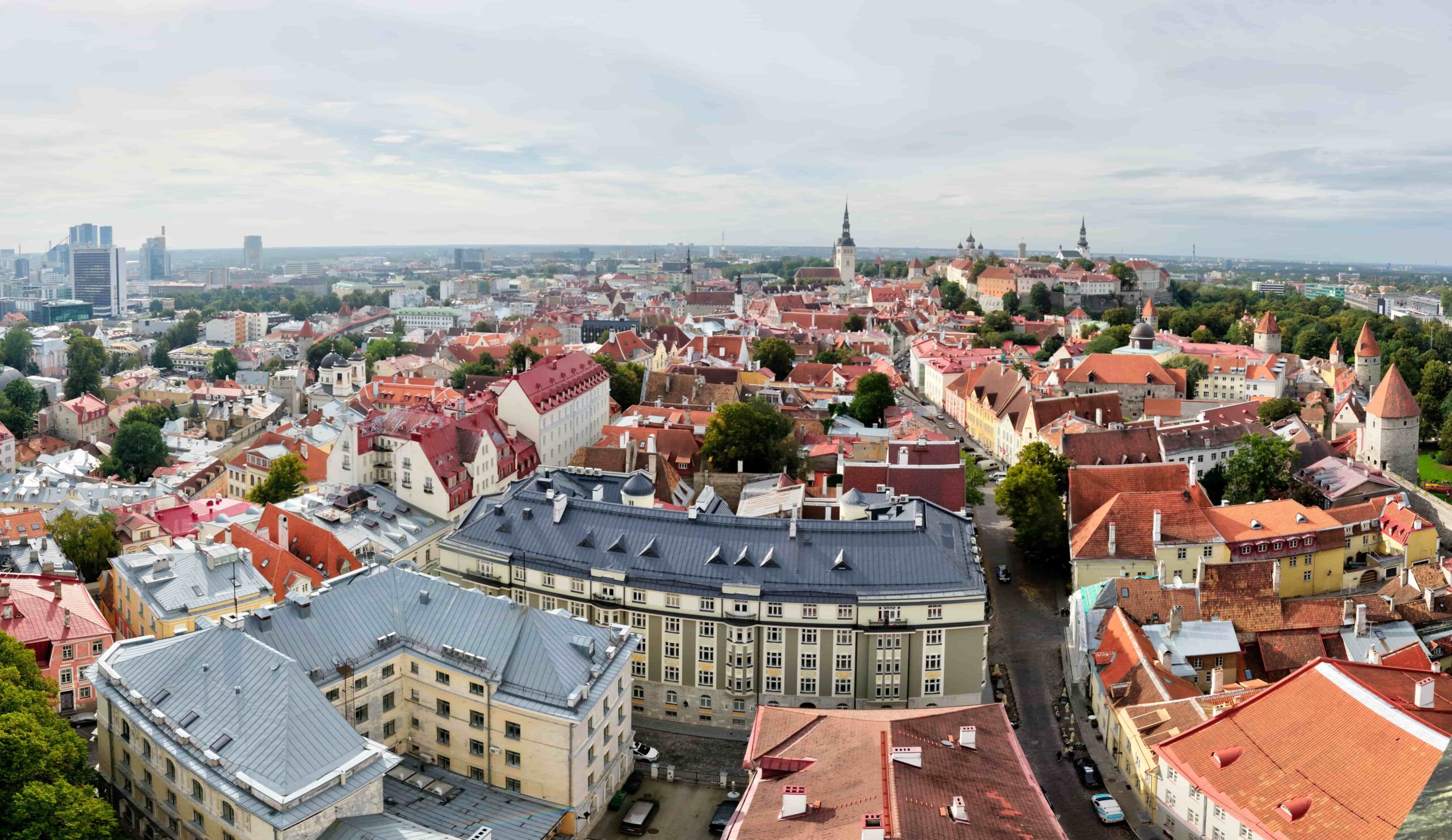

See Kiek in de Kök, the hill’s final terminus and a section of city wall directly below the remnants of Toompea Castle. Start with the Maiden Tower, which provides another great vantage point over the city, have a bite to eat, and then make your way to the complex’s tallest tower, where you can climb six storeys to watch an exhibition on Tallinn and the city wall. The Bastion Passages, located at the base of the tower, are an interesting network of tunnels that were constructed in the 17th and 18th centuries. The stairwell is damp and slippery, so tread carefully.
After a day of exploring the Old Town and Toompea Hill, wind down with some authentic Estonian food. Tallinn is home to several dining establishments serving traditional Estonian fare including pig, mulgipuder (a porridge consisting of mashed potatoes and barley), and herring. You can grab a cheap cup of elk soup at the III Draakon at the Town Hall if you’re on a tight budget. Alternately, you may try F-Hoone, Kaja Pizza Köök, or Burger Box. Simply said, the food at Vanaema Juures (which translates to “Grandma’s home”) is some of the best in Estonia. Take one more stroll or settle down someplace before retiring for the night.

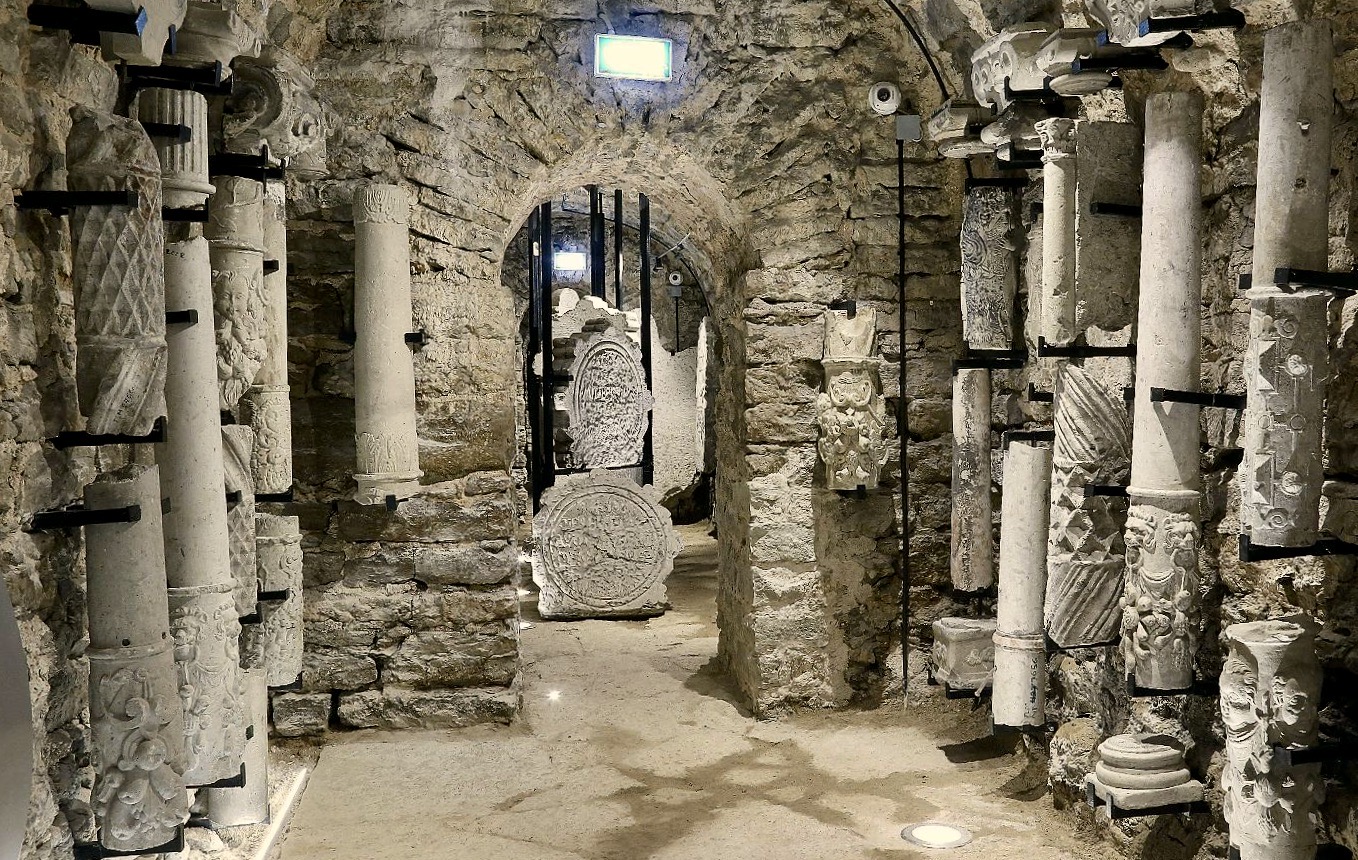
- Backpacker:
- Budget:
- Mid-range:
- Luxury:
When it becomes dark, a foreign city may be twice as dangerous - especially if you don't understand the language and are unfamiliar with the area. There is little reason to be alarmed about walking alone in the city since there isn't enough crime recorded in Tallinn to warrant worry. You can walk safely at day, and at night, however be wary while walking at night and be alert in crowded areas or unlit alleys or streets. You can always take taxis, if you don't feel comfortable, Be wary of petty crime by taking precautions mentioned in the safety section above.
Day 2
Exploring More Tallinn
Today, after a hearty breakfast, you’ll go off to see the museums of Tallinn and discover more of the city’s stunning Old Town. Visit the Great Guild Hall, dating back to 1410, once a merchants association, turned wine cellar and now the Estonian History Museum to learn about the city and country’s past. Then g et up to Hellemann Tower on the City Wall for a vista unlike anything you saw yesterday. After that, continue your sightseeing at Viru Gate before visiting St. Catherine’s Passage, one of Tallinn’s most picturesque alleyways and a fantastic spot to pick up some souvenirs.
Stop into Maiasmokk Cafe, Tallinn’s oldest cafe, and have some coffee and some of the city’s best pastries. There’s definitely time in the afternoon to see one more museum, so pick one you’re really like. If you’re bored, though, Tallinn is full of cool places to hang around and see. You may check out the KGB Museum, the NUKU Museum of Puppet Arts, or the stunning Art show in Kadriorg Palace. Close the book on the day and get ready for tomorrow.
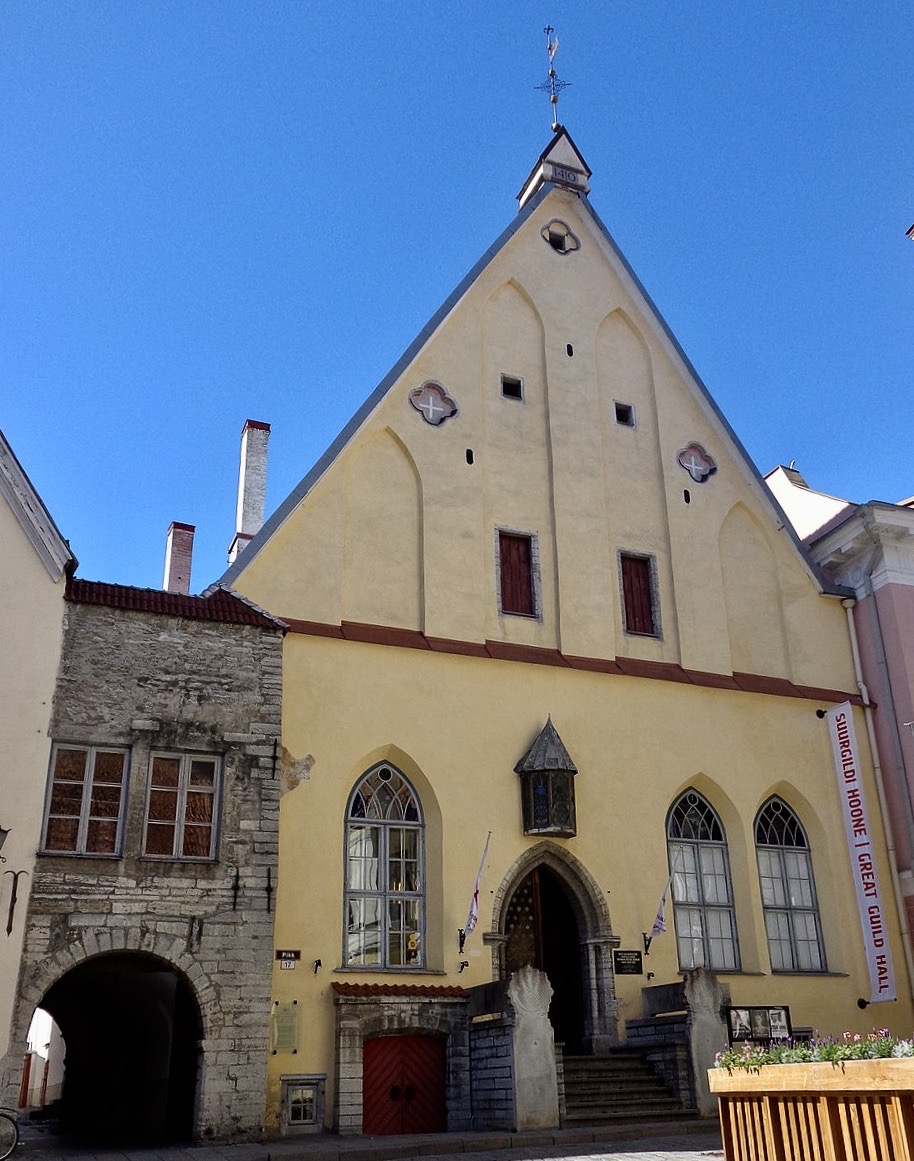
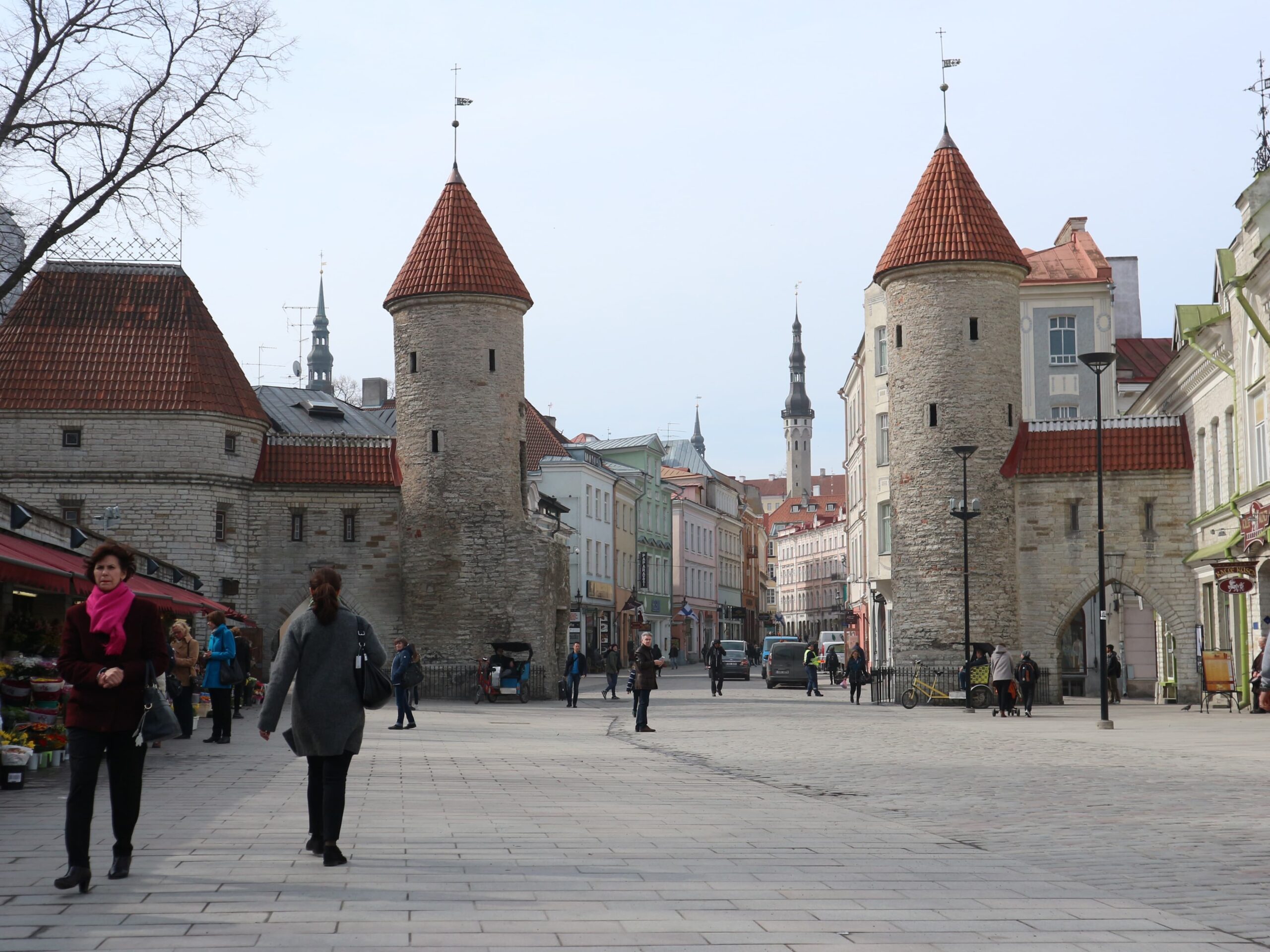
Day 3
Off to Saaremaa
Saaremaa, the largest island in Estonia, is on the itinerary for today’s sightseeing adventure. Even though Estonia doesn’t feel like an island destination, there are more than 2,000 of them in the country. Make Kuressaare, the largest town on Saaremaa, your main base while you discover the rest of the island. Traveling time from Tallinn to Kuressaare is around four hours, giving you the afternoon to see the town and its famous Episcopal and Kuressaare Castle. There are several displays within the castle, which was constructed in the 14th century. Follow the directions, so you don’t get lost while you explore the different levels and towers. Not only does the museum detail the history of the castle, but also that of Saaremaa and its people.
You can go up in one of the towers if you visit. Make sure you go up and enjoy the view. From this vantage point, not only can you view the ocean and the castle gardens below, but you can also make out the star-shaped moat that protects the castle’s defenses.


- Backpacker:
- Budget:
- Mid-range:
- Luxury:
When it becomes dark, a foreign city may be twice as dangerous - especially if you don't understand the language and are unfamiliar with the area. There is little reason to be alarmed about walking alone in the country since there isn't enough crime recorded in Saaremaa to warrant worry. You can walk safely at both day and night, just be alert in crowded areas or unlit alleys or streets. You can always take taxis, if you don't feel comfortable, Be wary of petty crime by taking precautions mentioned in the safety section above.


Day 4
Exploring Kuressaare
Get out and see more of Kuressaare today. At first, you should take a stroll in the central area and take pictures of the old wooden structures. You can spend the day at the seaside if the weather is favorable or at Kaali. There are nine craters in and around Kaali, all caused by a meteor that crashed on Saaremaa around 3,500 years ago. The force of the impact caused all forest within a radius of up to six kilometers to burn to the ground. Some experts think the meteor is still referenced in modern-day Estonian and Finnish folklore.
The spa is an alternative to both the beach and Kaali for the remainder of the day. Estonians often travel to Kuressaare for a day at one of the town’s many spas to unwind and indulge. This is a great chance to experience Estonia’s famous sauna culture for yourself.


Day 5
Head to Pärnu
You will be going to Pärnu, on the mainland, today. This coastal city is the country’s fourth-largest, and has the best beach in Estonia. Although summer is the best time to visit Pärnu, the city is beautiful at any time of the year. When the temperature outside is just right, nothing beats a day at the beach soaking up some rays. Take a leisurely stroll through the downtown area and marvel at the wooden homes and brightly painted doorways. Pärnu is full with street art, so keep your eyes peeled as you go throughout the city.
The Red Tower is the last standing structure from the fort that previously stood here and should not be missed. Only three of its original four levels and six-meter-deep jail cell remain. Visit any of the many eateries if you need a break from walking. If you’re looking for a place to calm down, unwind, and take in the sights, Pärnu is the place to be. Visit the Pärnu Museum to discover more about the city’s history, which spans from the Ice Age to the present day and features an exhibition and a small theater showing short films from each era.
- Backpacker:
- Budget:
- Mid-range:
- Luxury:
When it becomes dark, a foreign city may be twice as dangerous - especially if you don't understand the language and are unfamiliar with the area. There is little reason to be alarmed about walking alone in the country since there isn't enough crime recorded in Pärnu to warrant worry. You can walk safely at both day and night, just be alert in crowded areas or unlit alleys or streets. You can always take taxis, if you don't feel comfortable, Be wary of petty crime by taking precautions mentioned in the safety section above.

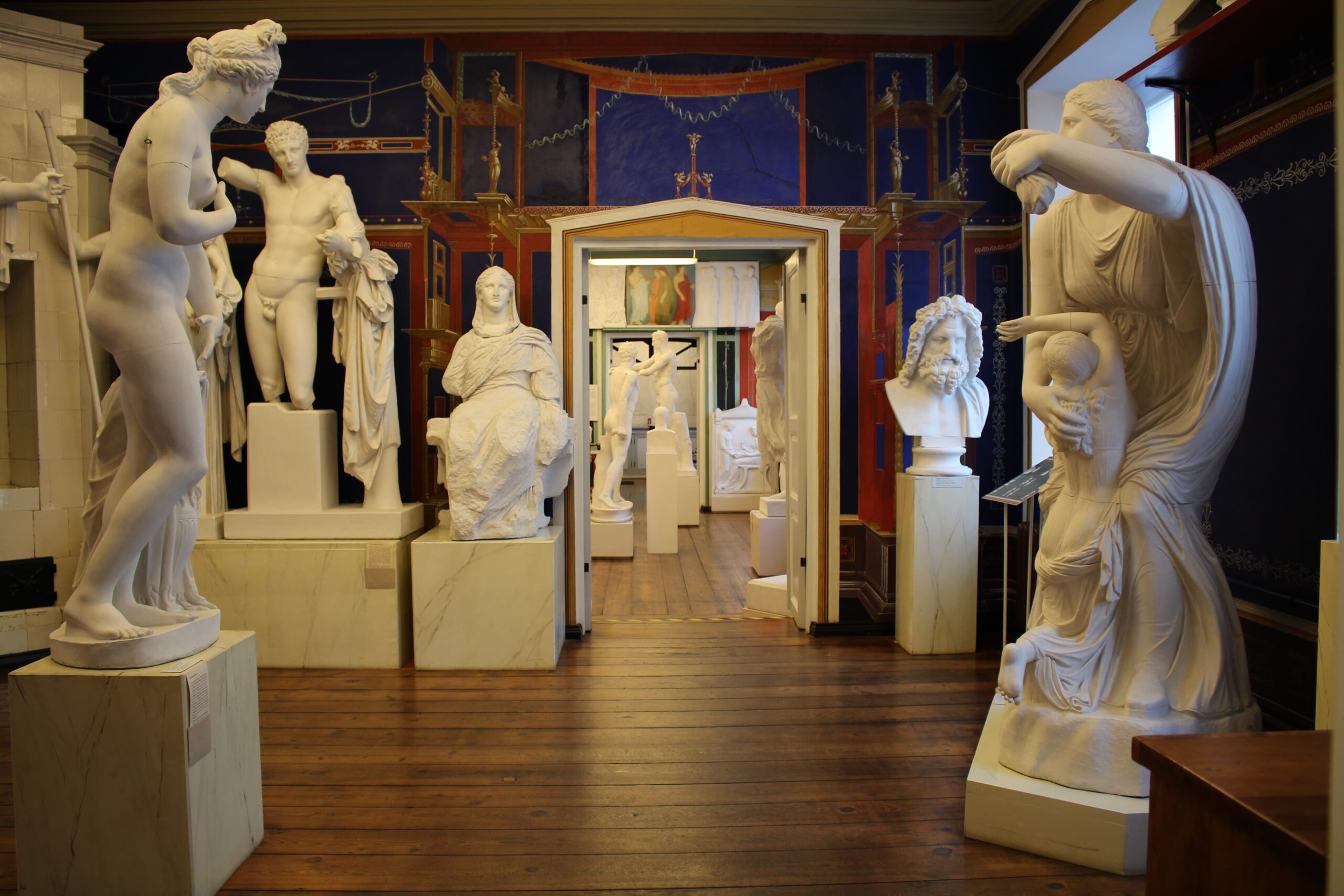
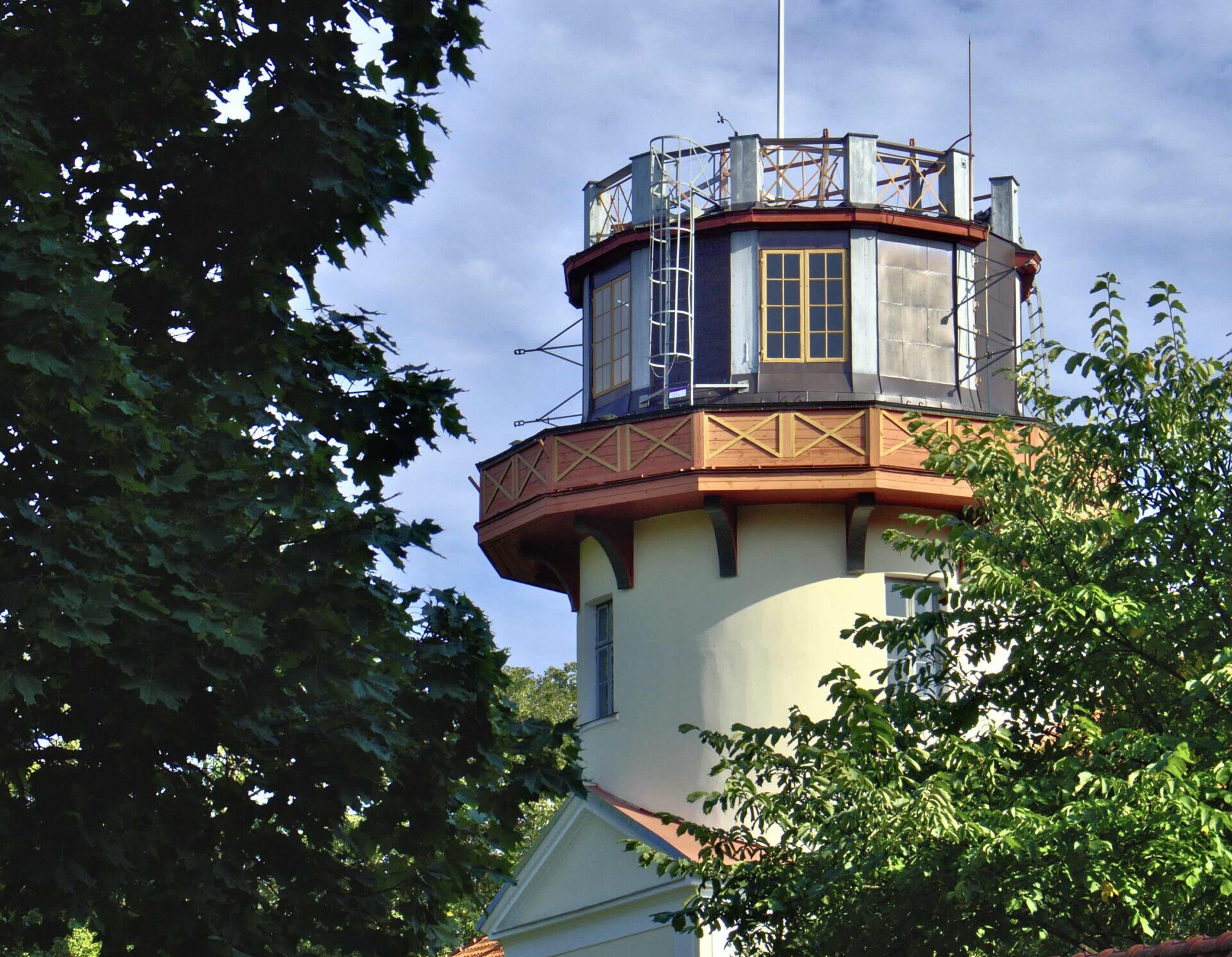
Day 6
To Tartu
You should travel the three hours to Tartu after a productive stay in Parnu. The museums of Tartu University, the city’s claim to fame, are not to be missed. Get your tour of Tartu off to a great start with the University of Tartu Museum, located at the very top of Toome Hill. It’s stretched out over several stories, with the best sections being on the third and fourth. The Museum houses both the university’s historical collections and the old library. The library is full with historical artifacts related to Tartu University, including as books, globes, and sculptures. The Tartu Cathedral stands next to the University of Tartu Museum; it was originally constructed in the 13th century but was badly destroyed three centuries later and then reconstructed.
Continue along to the Old Observatory, located atop Toome Hill, where you’ll be rewarded with breathtaking panoramas of Old Town. Astronomer Friedrich Georg Wilhelm von Struve created a series of survey triangulations and he was able to precisely estimate the size and form of Earth and calculate the length of a meridian. He went to great lengths to collect his data, but did the bulk of his analysis at home in Tartu at the observatory. You can visit the observatory and learn more about von Struve, his work, and astronomy in general given that it is a UNESCO World Heritage Site. If you haven’t yet climbed to the top of Tartu Cathedral, you may do it from the observatory as well.
- Backpacker:
- Budget:
- Mid-range:
- Luxury:
When it becomes dark, a foreign city may be twice as dangerous - especially if you don't understand the language and are unfamiliar with the area. There is little reason to be alarmed about walking alone in the country since there isn't enough crime recorded in Tartu to warrant worry. You can walk safely at both day and night, just be alert in crowded areas or unlit alleys or streets. You can always take taxis, if you don't feel comfortable, Be wary of petty crime by taking precautions mentioned in the safety section above.
Day 7
Final Hours
After breakfast, you can begin your day in Tartu’s Old Town before making your way back to Tallinn. Town Hall Square is a stunning area in Tartu, home to several ancient buildings and the famed Kissing Students fountain. Whether or not they are still in place, the National Geographic–style yellow frames that have been installed to encourage tourists to explore the area’s many attractions will serve as a constant reminder of the greatest vantage points from which to snap memorable images. After that, you can take a brief tour of the University of Tartu Art Museum, where you can see reproductions of Roman statues as well as a holding cell, where students who defied the law might be locked up for anything from one day to twenty-one days. Visit the redbrick St. John’s Church as your final Old Town attraction before returning to Tallinn. You can make it back to the Estonian capital in under three hours, in time for your final meal.
If your flight is soon, you should get there; otherwise, you have time to explore and perhaps spend your last night in Tallinn.
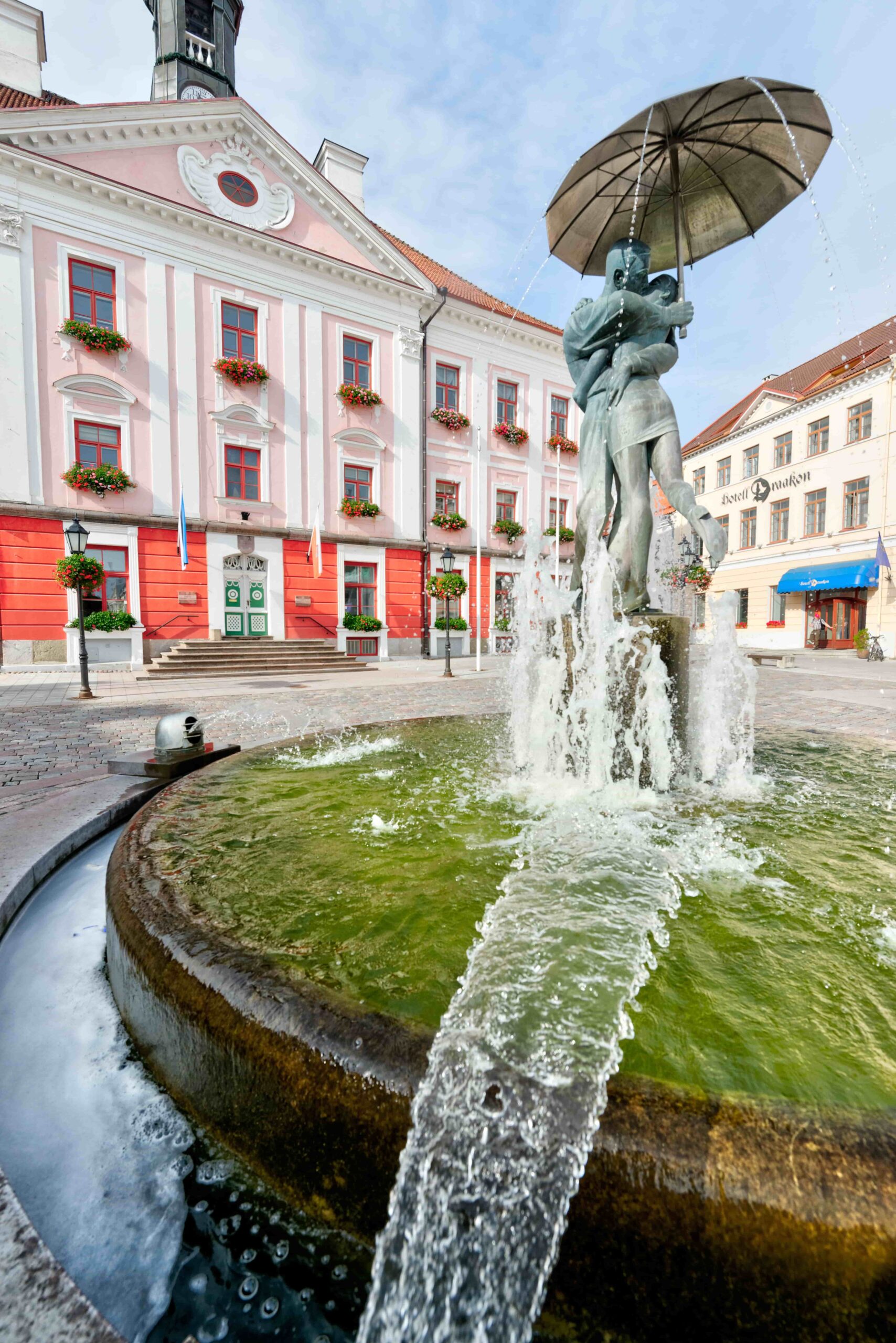

The Most Popular Food in Estonia
The cuisine of Estonia is greatly influenced by the cuisines of its neighbors. There are definite influences from Germany and Scandinavia in typical Baltic food. The cuisine is hearty and abundant with meats and sauces, much like Russian cuisine. The cuisine of Estonia is characterized by substantial staples, tender meats, and a significant amount of European influence; each bite has a great deal of warmth and comfort. It shouldn’t come as a shock. There are so many fresh, high-quality ingredients that are used in Estonian cooking, ranging from the fish that are caught in the freshwater lakes to the enormous fields of rye. Be ready for tastes that will blow your mind while also calming and soothing your tummy while you’re in the country.

Rosolje
Rosolje is made with beetroot, pork, and herring are the primary ingredients in this Estonian meal, which is prepared in the traditional manner. Rosolje in its most basic form, rosolje is a beet salad. It is an excellent addition to the majority of meals and is served chilled.

Pirukad
Pirukad has a variety of fillings, including meat, cabbage, carrots, or rice, can be used to create this dish’s dumpling-like appearance. Bouillon is a common condiment offered alongside it. It’s the Estonian version of Polish pierogi, and it can be found on the menus of most casual eateries.

Raim
Raim is widely regarded as a national staple in Estonia. Typically, Baltic dwarf herring is used in this dish, and it is marinated in a sour cream-based sauce that gives it a bold taste.

Vürtsikilu Suupiste
Spicy Sprats Snack, are small, oily sprats, wonderful over rye bread, much like sardines. They are used in a wide variety of meals and are quite well-liked there. Sprats are available at most grocery shops and other retail food outlets. You may get them canned, smoked, or pickled in a hot brine. All provide distinctive, modern tastes to the meal.
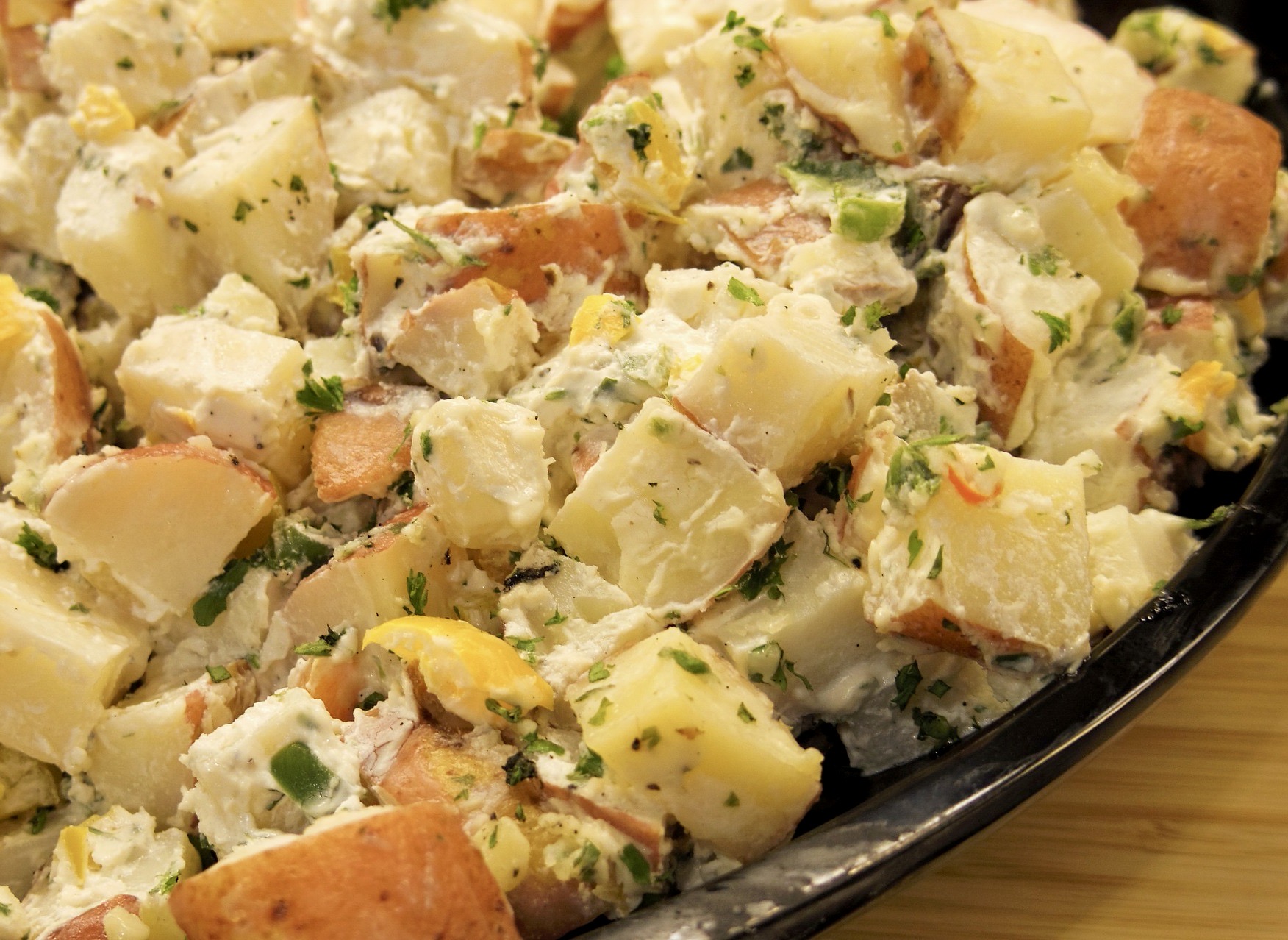
Eesti Kartulisalat
Most European countries serve some form of potato salad regularly, and each country has its own special take on the dish. With the Estonian Potato Salad, the cooked potatoes and carrots are first chopped into little pieces. The salad gets a boost with the addition of a shredded hard-boiled egg, cucumber cubes, and smoked sausage links.
What's the Travel Budget for Estonia
Flights
- Flights start at roughly $18 from nearby countries. Tickets however on average cost around $350 and can cost way more depending on which class and from which country you depart from.
Accommodation
- Nomad Backpacking style travelers can expect to spend around $220 for a week
- Budget travelers can expect to spend around $360 for a week
- Mid-range travelers can expect to spend around $470 for a week
- Luxury travelers can expect to spend around $950 for a week
Food Budget (Three meals and drinks)
- Nomad Backpacking style travelers can expect to spend around $14 per person per day
- Budget travelers can expect to pay around $24 per person per day
- Mid-range travelers on average would cost $30 to $45 per person per day
- Luxury travelers can expect to pay around $60 to $125 per person per day
Overall Budget Styles (Not including Flights, Tours, Transportation, or Car Rental)
- Nomad Backpacking style travelers can expect to spend roughly $360 for a week
- Budget travelers can expect to spend close to $560 for one person for a week
- Mid-range travelers can expect to spend approximately $850 for one person for a week
- Luxury travelers can expect to spend around $1,550 for one person for a wee
Flights
- Flights start at roughly $18 from nearby countries. Tickets however on average cost around $350 and can cost way more depending on which class and from which country you depart from.
Accommodation
- Nomad Backpacking style travelers can expect to spend around $220 for a week
- Budget travelers can expect to spend around $360 for a week
- Mid-range travelers can expect to spend around $470 for a week
- Luxury travelers can expect to spend around $950 for a week
Food Budget (Three meals and drinks)
- Nomad Backpacking style travelers can expect to spend around $14 per person per day
- Budget travelers can expect to pay around $24 per person per day
- Mid-range travelers on average would cost $30 to $45 per person per day
- Luxury travelers can expect to pay around $60 to $125 per person per day
Overall Budget Styles (Not including Flights, Tours, Transportation, or Car Rental)
- Nomad Backpacking style travelers can expect to spend roughly $360 for a week
- Budget travelers can expect to spend close to $560 for one person for a week
- Mid-range travelers can expect to spend approximately $850 for one person for a week
- Luxury travelers can expect to spend around $1,550 for one person for a wee
Flights
- Flights start at roughly $18 from nearby countries. Tickets however on average cost around $350 and can cost way more depending on which class and from which country you depart from.
Accommodation
- Nomad Backpacking style travelers can expect to spend around $220 for a week
- Budget travelers can expect to spend around $360 for a week
- Mid-range travelers can expect to spend around $470 for a week
- Luxury travelers can expect to spend around $950 for a week
Food Budget (Three meals and drinks)
- Nomad Backpacking style travelers can expect to spend around $14 per person per day
- Budget travelers can expect to pay around $24 per person per day
- Mid-range travelers on average would cost $30 to $45 per person per day
- Luxury travelers can expect to pay around $60 to $125 per person per day
Overall Budget Styles (Not including Flights, Tours, Transportation, or Car Rental)
- Nomad Backpacking style travelers can expect to spend roughly $360 for a week
- Budget travelers can expect to spend close to $560 for one person for a week
- Mid-range travelers can expect to spend approximately $850 for one person for a week
- Luxury travelers can expect to spend around $1,550 for one person for a wee
Flights
- Flights start at roughly $18 from nearby countries. Tickets however on average cost around $350 and can cost way more depending on which class and from which country you depart from.
Accommodation
- Nomad Backpacking style travelers can expect to spend around $220 for a week
- Budget travelers can expect to spend around $360 for a week
- Mid-range travelers can expect to spend around $470 for a week
- Luxury travelers can expect to spend around $950 for a week
Food Budget (Three meals and drinks)
- Nomad Backpacking style travelers can expect to spend around $14 per person per day
- Budget travelers can expect to pay around $24 per person per day
- Mid-range travelers on average would cost $30 to $45 per person per day
- Luxury travelers can expect to pay around $60 to $125 per person per day
Overall Budget Styles (Not including Flights, Tours, Transportation, or Car Rental)
- Nomad Backpacking style travelers can expect to spend roughly $360 for a week
- Budget travelers can expect to spend close to $560 for one person for a week
- Mid-range travelers can expect to spend approximately $850 for one person for a week
- Luxury travelers can expect to spend around $1,550 for one person for a wee
If you want to know what to pack, read this list below:
- This is a casual European country with moderate weather that tends to get cold and rainy, dress accordingly
- Raincoat or Light Waterproof Jacket
- Hiking Boots or Sturdy Sneakers (Shoes You Don’t Mind Getting Wet)
- Sunscreen
- Insect Protection – Repellent and Clothing
- Sunglasses and Sun Hat
- Water Shoes
- Beach Towels/Sarong
- Dry Bag
- Money Belt or Cross Bag
- Portable Medical Kit
- Flashlight or Headlamp
- Copies of your passport.
- Get all the needed vaccinations before traveling
- A power bank is a must in any travel.
- Always have some cash with you just in case there are no ATMs and if you are dealing with a business that solely accepts cash
- Get yourself an adapter for your gadgets
- 1 toothbrush
- 1 tube of toothpaste
- 1 razor
- 1 package of dental floss
- 1 small bottle of shampoo
- 1 small bottle of shower gel
- 1 towel
- Deodorant
- Band-Aids
- Hydrocortisone cream
- Antibacterial cream
- Earplugs
- Tylenol
- Hand sanitizer (germs = sick = bad holiday)
- A key or combination lock
- Zip-lock bags
- Plastic bags (great for laundry)
- Universal charger/adaptor
- LifeStraw (A water bottle with a purifier)
- 1 dry shampoo spray & talc powder
- 1 hairbrush
- Makeup you use
- Hairbands & hair clips
- Feminine hygiene products
Clothing For Boys
- 1 pair of jeans or khaki pants
- 1 pair of shorts
- 1 bathing suit
- 5 T-shirts
- 1 long-sleeved T-shirt
- 1 pair of flip-flops
- 1 pair of sneakers
- 6 pairs of socks
- 5 pairs of boxer shorts
Clothing For Girls
- 1 swimsuit
- 1 sarong
- 1 pair of stretchy jeans
- 1 pair of leggings
- 2-3 long-sleeve tops
- 2-3 T-shirts
- 3-4 spaghetti tops
- 1 light cardigan
Want to plan your own trip, here are some of the best resources that can help you
- Skyscanner – They search small websites and budget airlines that larger search sites tend to miss. They are hands down the number one place to start.
- Momondo – This is another favorite flight search engine because they search such a wide variety of sites and airlines. Always check here too.
- Booking.com – The best all-around booking site that constantly provides the most affordable and lowest rates. They have the widest selection of budget accommodation.
- Couchsurfing – This website allows you to stay on people’s couches or spare rooms for free. It’s a great way to save money while meeting locals who can tell you the ins and outs of their city. The site also lists events you can attend to meet people (even if you’re not staying with someone).
- Intrepid Travel – If you want to do group tours, go with Intrepid. They offer good small group tours that use local operators and leave a small environmental footprint.
- Grassroots Volunteering – For volunteering, Grassroots Volunteering compiles a list of good local volunteer organizations that keep the money within the community.
- Get Your Guide – Get Your Guide is a huge online marketplace for tours and excursions. They have tons of tour options available in cities all around the world, including everything from cooking classes, walking tours, street art lessons, and more! It has the world’s largest collection of things to do with more than 30,000 activities in 7500 destinations.
- SafetyWing – Safety Wing offers convenient and affordable plans tailored to digital nomads and long-term travelers. They have cheap monthly plans, great customer service, and an easy-to-use claims process that makes it perfect for those on the road.
- Trip Advisor: Check the reviews and then book your accommodation. TripAdvisor is where you go when you want to compare prices with multiple accommodation providers.
- VRBO: is the main search engine to use when you are looking for a home or apartment rental. It can sometimes be cheaper than hotels and it is the best way to stay in areas that offer a more local feel.
- Hostelworld: With one of the largest databases of hostels in the world, Hostelworld is the go-to site when you are looking for budget accommodation.
- Rome 2 Rio: If you want to see how to get somewhere by plane, train, bus, ferry, or car Rome2Rio lays it all out for you as well as related costs.
- World Nomads Insurance: When traveling you should always have travel insurance. We have found the best bang for your buck is by far World Nomads.
Final Thoughts on Estonia
Estonia has a rich history that can be seen all over the country, dating back to at least 800 BC according to recorded history, with its various medieval buildings and heritage, dazzling and unusual landmarks, unbelievable warmth amid the cold weather, exciting tunes, and celebrations, and vivid picture-perfect surroundings of highlands and pristine beaches best for kicking back, but also wildlife and marine life sightings. One of the finest destinations in Europe to have on a trip. Incredible natural beauty, unique fauna, and historic sites make Estonia a must-see destination for every adventurer. Do you want to go to Estonia?
Did you visit Estonia? In the space provided below, we invite you to express your thoughts and insights.